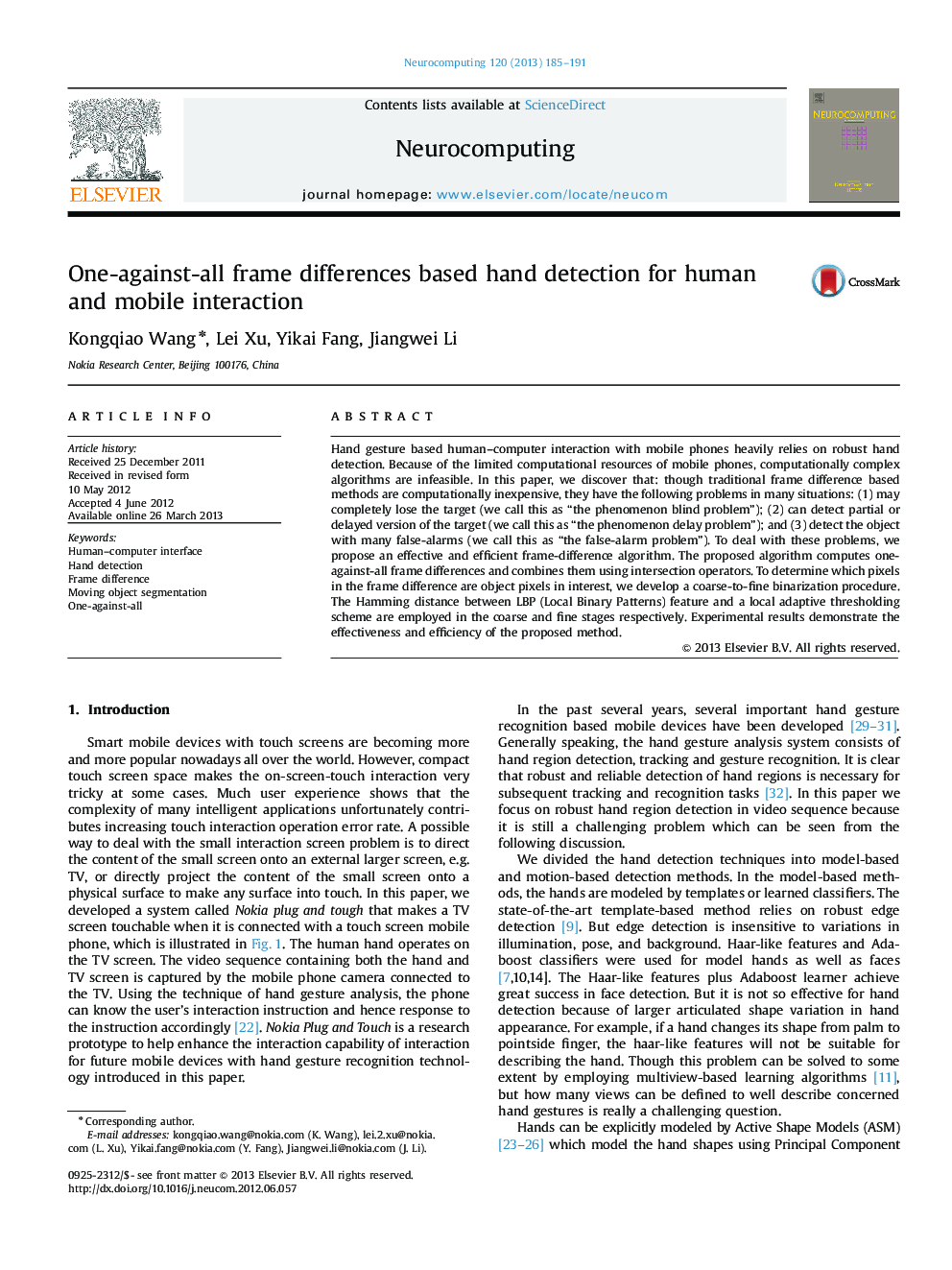| Article ID | Journal | Published Year | Pages | File Type |
|---|---|---|---|---|
| 410223 | Neurocomputing | 2013 | 7 Pages |
Hand gesture based human–computer interaction with mobile phones heavily relies on robust hand detection. Because of the limited computational resources of mobile phones, computationally complex algorithms are infeasible. In this paper, we discover that: though traditional frame difference based methods are computationally inexpensive, they have the following problems in many situations: (1) may completely lose the target (we call this as “the phenomenon blind problem”); (2) can detect partial or delayed version of the target (we call this as “the phenomenon delay problem”); and (3) detect the object with many false-alarms (we call this as “the false-alarm problem”). To deal with these problems, we propose an effective and efficient frame-difference algorithm. The proposed algorithm computes one-against-all frame differences and combines them using intersection operators. To determine which pixels in the frame difference are object pixels in interest, we develop a coarse-to-fine binarization procedure. The Hamming distance between LBP (Local Binary Patterns) feature and a local adaptive thresholding scheme are employed in the coarse and fine stages respectively. Experimental results demonstrate the effectiveness and efficiency of the proposed method.
